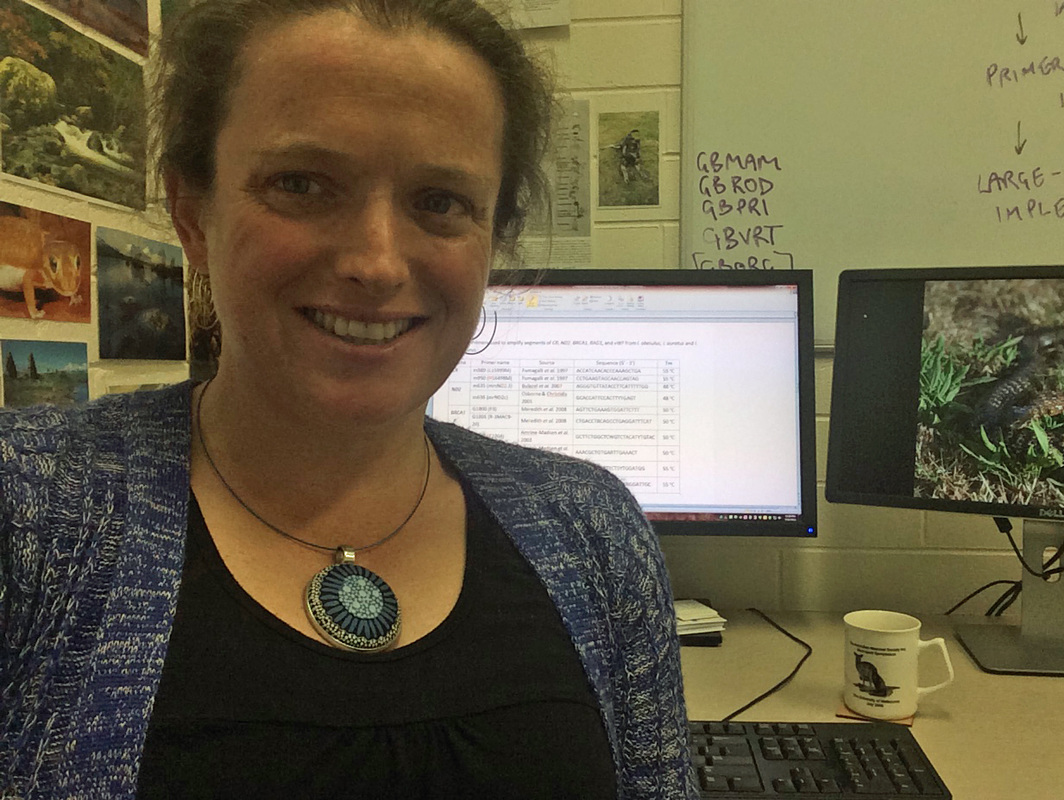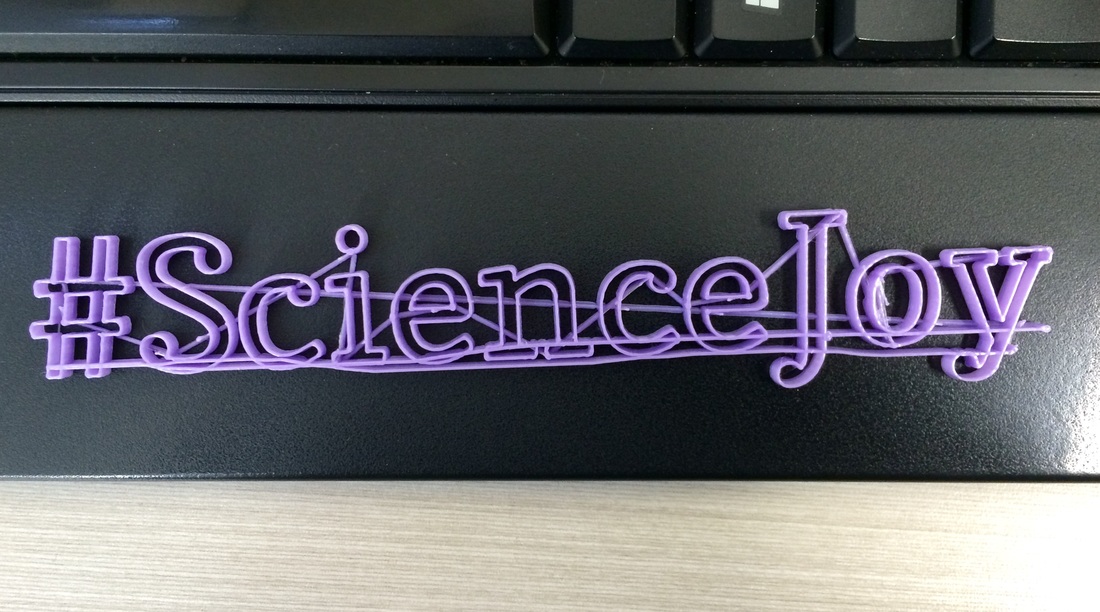Anna MacDonaldI'm a biologist with interests in genetics, conservation, ecology, invasive species, and wildlife management. Archives
May 2019
Categories
All
|
Back to Blog
Click here to read the full post at WildlifeSnpits
At this time last year I was quite uncomfortable about the idea of participating in #365scienceselfies, but still, I agreed to give it a go. I thought it was worth exploring as a different kind of science communication, to show what scientists look like and what we do. I never once thought I’d actually reach the nominal target of 365 selfies, but I was quite surprised to find that I shared 197 selfies during 2016. That’s more than I had expected. If you want to see them all in one place, I made a Storify of my #365scienceselfies posts. I was very consistent with posts during the first half of the year, only missing the occasional day, but there were more gaps between posts later on. In July and August I spent a few weeks in-between jobs, and a combination of travel and enforced vacation left me feeling less enthusiastic about taking science selfies. Subsequently I’ve been juggling a few different sets of responsibilities and found it a lot harder to remember to take photos when I was actually doing something interesting and sciencey. As a quick summary, of the 197 selfies I posted, 29 were taken in a lab and 50 with a computer. Sadly I didn’t really do any fieldwork this year, but I did include a few photos from hikes and bike rides. I took 36 selfies at meetings and talks (lab meetings, workshops, seminars, phone meetings…). Other people (colleagues, friends, family) featured in 45 photos and my dogs managed to “sneak” into 8 pictures. Strictly speaking, just under a third of my selfies didn’t actually feature me doing my job, although many of these were work-related, for example those taken at work functions. Finally, it won’t be a surprise to anyone who knows me to discover that 31 photos featured a cup of tea (or in a couple of cases, coffee)...
0 Comments
Read More
Back to Blog
Click here to read the full post at WildlifeSNPits
I love going to scientific conferences. They provide me with great opportunities to learn about exciting new research, expand my professional network, and catch up with colleagues and old friends. Over the last few months (and at this point in previous years) I’ve spent some time evaluating student applications for a couple of different conference travel awards. Many academic societies offer such awards, providing grants to support and encourage undergraduate and / or postgraduate students to attend their annual conferences. This year I had more applications to read than usual, and found myself noting some of the same points (both good and bad) many times. So, while this is all fresh in my mind, here are my top five tips for writing a good travel award application*...
Back to Blog
Click here to read the full post at WildlifeSNPits
Last week I had the privilege of spending two days at the 16th “Science meets Parliament”. It was an eye opening experience and I’ve learnt a lot… but let me explain… Science meets Parliament is an annual event run by Science and Technology Australia (STA), the peak body representing Australian science and technology. It includes career development opportunities related to science communication, media and policy, and the chance to spend a day at Parliament House, meeting politicians and staffers, listening to talks from political leaders and learning about how the parliamentary system works. Each member organisation of STA is able to send two representatives to the event, and this year I was fortunate to attend on behalf of the Genetics Society of AustralAsia. I’m sure I’ll miss a lot of things, but I’ll outline my highlights of the event below.
Back to Blog
Click here to read the full post at WildlifeSNPits:
Today, 13th August, is Ada Lovelace Day, which celebrates the achievements of women in STEM (science, technology, engineering and mathematics) fields. Ada Lovelace was one of the first women admitted to the Royal Astronomical Society and is regarded by many to have been the first computer programmer. To mark the occasion, we thought we’d take a look at our own “typical” experiences as women in STEM, through a series of three “day in the life” posts. I’m first up, posts from Emily and Stephanie will follow over the next few days (edited 16/10/2015: you can now read Emily’s post here and Stephanie’s post here).
Back to Blog
Click here to read the full post at WildlifeSNPits:
It’s Friday, and nearly the end of the month. Think back over the last week, the last few weeks. Have you been a science grouch? I know I have. Perhaps you’ve complained about the lack of job opportunities in science? Your paper got bad reviews? Your sequencing failed? Or something else…? If I look back, honestly, I am confident that I must have had conversations almost every day this month, in real life or on Twitter, that have involved some sort of science grouchiness.
Back to Blog
Click here to read the full post at WildlifeSNPits:
“Bob said I should call you because it would be good to do some genetics on this mammal population, how long will that take…?” “Alice and I collected a few tissue samples when we were in the field earlier this year and now we’d like to talk to you about collaborating on some DNA analysis…” I’m paraphrasing of course, but I’ve heard variants of these numerous times over the last decade or so. I’ve also met many people with a passion for ecology and conservation who have wanted to learn more about genetics as it applies to their research. Which is great! DNA can be a wonderful tool with great potential to contribute to wildlife conservation and management. As DNA sequencing technologies advance, genetic analysis has become both more affordable and more accessible to people who study non–model organisms (i.e. most of the world’s wildlife!).
Back to Blog
Click here to read the full post at WildlifeSNPits:
Earlier this year I spent two weeks walking in picturesque Tasmania, eyes fixed firmly to the floor, looking for poo to collect. Other times I’ve searched beneath rocks in high country paddocks for endangered lizards, or driven over 400 kms with a cargo of wallaby sperm destined for our lab freezers. And I get paid to do this! When I meet new people they often comment on how interesting my work sounds, usually followed by “and how on earth did you end up doing that anyway?”. So in my first post for WildlifeSNPits I thought that, by way of introduction, I’d write about some of the things that have inspired me to follow this career path. Of course not all of us are excited by the same things, so I’d also like to learn about your sources of inspiration… |
 RSS Feed
RSS Feed






